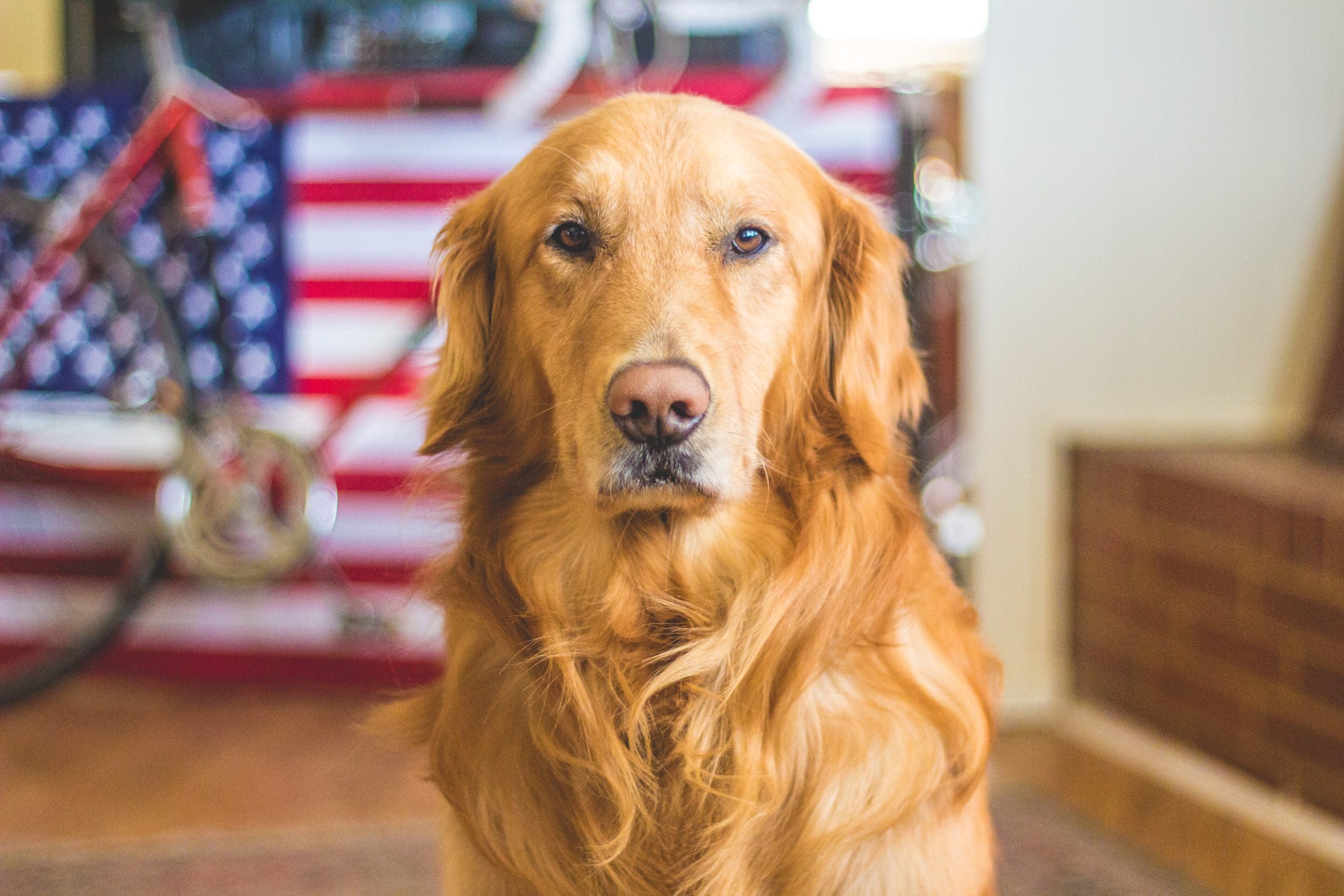Imagine having a well-behaved, happy dog who never barks at the mailman or chews on your favorite shoes. Sound too good to be true? Well, crate training might just be the answer you've been looking for. Crate training is a popular method used by dog owners to teach their furry friends good behavior and foster a sense of security. By providing a safe and comfortable space for your dog, crate training can have multiple benefits for both you and your four-legged companion. From aiding in house training to relieving anxiety, crate training can transform your dog's behavior and create a harmonious environment for both of you. So, if you're ready to unleash the benefits of crate training, let's dive in and discover the step-by-step guide to get started.
Creating a Safe Space for Your Dog
When it comes to creating a safe space for your dog, crate training is an excellent method to consider. Crate training is not about confining your furry friend, but rather giving them their very own den-like retreat where they can feel secure and relaxed. In this article, we will delve into the various aspects of crate training and how it can benefit your dog's overall well-being.
Understanding the concept of crate training
Crate training involves introducing your dog to a crate or crate-like enclosure for various purposes such as travel, sleep, and managing behavior. It is essential to understand that a crate should never be used as a form of punishment. Instead, it should be a positive and safe space that your dog associates with comfort and security. By introducing your dog to a crate, you are providing them with a personal sanctuary, which can help reduce anxiety and stress.
Choosing the right crate size
Selecting the appropriate crate size is crucial to ensure your dog's comfort and safety. The crate should be large enough for your dog to stand up, turn around, and lie down comfortably. However, it should not be too spacious that your dog can use one corner as a bathroom area. Consider the size of your dog when choosing a crate and opt for one that allows them enough room to move, without being too large.
Selecting a suitable location for the crate
Where you place the crate is also important to create a conducive and comfortable environment for your dog. Ideally, you should position the crate in an area of your home that is quiet, calm, and easily accessible. Avoid placing the crate in busy areas or near drafty spots. Remember, the goal is to provide your dog with a peaceful retreat where they can relax and feel secure.
Managing Separation Anxiety
Separation anxiety can be a common issue among dogs, but crate training can help alleviate this stress and anxiety. By following some simple steps, you can gradually reduce separation anxiety and build a positive association with the crate.
Reducing stress and anxiety
To minimize separation anxiety, it's important to gradually expose your dog to the crate. Begin by leaving the crate door open and placing treats or comfortable bedding inside. Encourage your dog to explore the crate at their own pace, never forcing them inside. By allowing your dog to associate positive experiences with the crate, they will naturally feel less anxious about being confined.
Building a positive association with the crate
It's essential to create positive associations with the crate to help your dog view it as a safe and enjoyable space. Incorporate rewards, toys, and treats during crate time to make it a positive experience. Praise and reward your dog whenever they willingly enter the crate or display calm behavior inside. This positive reinforcement will strengthen their positive association with the crate.
Gradually increasing crate time
Once your dog is comfortable spending short periods in the crate, you can gradually increase the duration of crate time. Start by closing the crate door for a few minutes while you remain nearby. Slowly extend the duration as your dog becomes more accustomed to being inside the crate. Remember to gauge your dog's comfort level and progress at their pace to avoid causing undue stress or anxiety.

This image is property of images.unsplash.com.
Facilitating House Training
House training is a crucial aspect of owning a dog, and crate training can greatly assist in this process. By incorporating the crate into your house training routine, you can promote good bathroom habits and prevent indoor accidents.
Promoting good bathroom habits
The enclosed space of the crate can help encourage your dog to develop good bathroom habits. Dogs inherently dislike soiling their immediate living area, so by confining them to the crate when unsupervised, you are teaching them to control their bladder and bowels.
Preventing indoor accidents
When your dog is in the initial stages of house training, it's crucial to prevent any indoor accidents. By confining them to the crate when you cannot directly supervise them, you eliminate the risk of your dog soiling in inappropriate areas of the house.
Establishing a routine with the crate
Incorporating the crate into your dog's daily routine is essential for successful house training. Use the crate to establish a consistent schedule for meal times, bathroom breaks, and playtime. By adhering to a routine, your dog will learn to anticipate and adhere to designated bathroom breaks, minimizing the chances of accidents occurring.
Preventing Destructive Behavior
Dogs, especially puppies, can exhibit destructive behavior if left unsupervised without proper guidance. Crate training can be an effective tool in preventing destructive behaviors and protecting your belongings.
Providing a secure and controlled environment
When you are unable to supervise your dog, confining them in a crate provides a secure and controlled environment. This prevents them from engaging in destructive behaviors such as chewing on furniture, shoes, or other household items.
Protecting your belongings from damage
By appropriately crate training your dog, you not only safeguard your dog but also protect your belongings from damage. Dogs that are prone to destructive behavior can be kept in a crate when unsupervised, minimizing the risk of them damaging valuable or sentimental items.
Curbing chewing and scratching behaviors
A well-sized and appropriately furnished crate can discourage chewing and scratching behaviors. By providing appropriate chew toys and mental stimulation within the crate, you redirect your dog's focus from destructive behaviors to more appropriate outlets. This helps in curbing their chewing and scratching tendencies.

This image is property of images.unsplash.com.
Ensuring Travel Safety
Whether you're embarking on a road trip or traveling by air, ensuring your dog's safety during travel is crucial. Crate training can significantly contribute to a safer and more comfortable travel experience for your furry companion.
Making trips more comfortable for your dog
Travel can be stressful for dogs, but having a familiar and secure crate can make the experience more comfortable. By acclimating your dog to the crate before travel, they will view it as a safe haven amidst the unfamiliarity of the journey.
Preventing distractions and accidents
While traveling, it's important to prevent distractions and accidents that could compromise the safety of both your dog and the other occupants of the vehicle. A properly secured crate provides the necessary containment to prevent your dog from moving around the car or interfering with the driver.
Complying with airline and travel regulations
When traveling by air, many airlines require that dogs be crated for their safety. Crate training your dog beforehand will ensure a smooth and compliant travel experience, adhering to the regulations set by the airline.
Promoting Sleep and Relaxation
Just like humans, dogs need sufficient sleep and relaxation to maintain good overall health. Crate training can aid in creating a peaceful and comfortable space for your dog to rest.
Creating a den-like environment for comfort
Dogs have a natural instinct to seek out den-like spaces for relaxation, and crate training can fulfill that need. By providing cozy bedding and toys inside the crate, you transform it into a safe, den-like environment that promotes sleep and relaxation.
Establishing a consistent sleep routine
Having a designated sleeping area can help establish a consistent sleep routine for your dog. By associating the crate with restful sleep, your dog will understand that it is time to unwind and relax when placed in their crate.
Reducing anxiety during nighttime
Some dogs experience anxiety or restlessness at night, making it challenging for them to settle down and sleep. A crate can provide a sense of security and help reduce anxiety, allowing your dog to sleep more peacefully throughout the night.

This image is property of images.unsplash.com.
Aiding in Training and Command Responses
If you're looking to enhance your dog's training and command responses, incorporating the crate into your training routine can be highly beneficial.
Using the crate as a training tool
The crate can serve as a valuable training tool for teaching your dog various commands and behaviors. By using positive reinforcement techniques, you can reward your dog for following commands correctly while inside the crate. This helps strengthen their listening and obedience skills.
Teaching your dog to respond to commands
Consistency is key when training your dog to respond to commands, and the crate can aid in achieving this consistency. By using the crate as a controlled environment, you can reinforce obedience training and teach your dog to respond promptly to commands.
Improving focus and obedience skills
When your dog is confined to a crate, their focus is naturally directed towards you. This can be advantageous when working on specific training exercises that require your dog's undivided attention. With decreased distractions, your dog can better focus on the training session and improve their obedience skills.
Providing a Time-Out Space
Just like humans, dogs can occasionally become excitable or display unwanted behavior. Having a designated time-out space, such as a crate, can be invaluable in such situations.
Teaching self-control and calmness
When your dog becomes overly excited or demonstrates unwanted behavior, a time-out in the crate can help teach self-control and calmness. Encouraging your dog to settle down and relax in the crate allows them to regain composure and learn appropriate behaviors.
Allowing for a break during excitable behavior
If your dog tends to become overly excited during playtime or social interactions, a brief break in the crate can help calm them down. It serves as a temporary retreat where they can relax and reset before rejoining the activity.
Avoiding reinforcement of unwanted behaviors
By confining your dog to a crate during periods of unwanted behavior, you avoid inadvertently reinforcing those behaviors. This prevents your dog from associating their behavior with any reward, decreasing the likelihood of it being repeated in the future.
Ensuring Safety in Emergency Situations
In unforeseen emergency situations, having your dog crate trained can play a vital role in ensuring their safety and minimizing panic and stress levels.
Creating a familiar and secure space
During emergencies such as natural disasters or home evacuations, a dog that is crate trained remains calm and composed. The crate serves as a familiar and secure space, offering comfort and minimizing stress during times of uncertainty.
Decreasing panic and stress levels
In high-stress situations, dogs may experience heightened panic and stress levels. A crate-trained dog is more likely to remain composed and relaxed, as they have a designated space where they feel safe and secure.
Preparing for natural disasters or escapes
In the event of natural disasters or unpredictable scenarios, it may be necessary to evacuate your home or secure your dog in a crate temporarily. Crate training prepares your dog for such situations, where their safety and well-being may depend on being confined and transported to a secure location.
Facilitating Vet Visits and Medical Procedures
Visiting the vet or undergoing medical procedures can be stressful for dogs. Crate training can help reduce anxiety and fear, making these experiences more manageable.
Reducing anxiety and fear at the vet
The unfamiliar scents, sounds, and environment of a vet clinic can be overwhelming for dogs. A crate-trained dog can find comfort in their crate amidst the unfamiliar surroundings, reducing anxiety and fear during vet visits.
Easing handling during examinations
Crate training can make handling during medical examinations or procedures more manageable for both the dog and the veterinarian. By confining your dog to a crate, you provide a safe and secure space for them to be examined, minimizing potential stressful interactions.
Assisting in post-surgery recovery
After undergoing surgery, dogs may require restricted movement or rest. A crate provides the necessary confinement and peace required for post-surgery recovery. By crate training your dog beforehand, they will be familiar with the process and more likely to comply with the post-surgery restrictions.
By implementing crate training, you can enhance your dog's overall well-being and create a safe and comfortable space for them. Whether it's managing separation anxiety, facilitating house training, preventing destructive behavior, ensuring travel safety, promoting sleep and relaxation, aiding in training and command responses, providing a time-out space, ensuring safety in emergency situations, or facilitating vet visits, crate training offers numerous benefits for both you and your furry friend. With patience, positive reinforcement, and consistency, crate training can be a rewarding experience that strengthens the bond between you and your dog.


